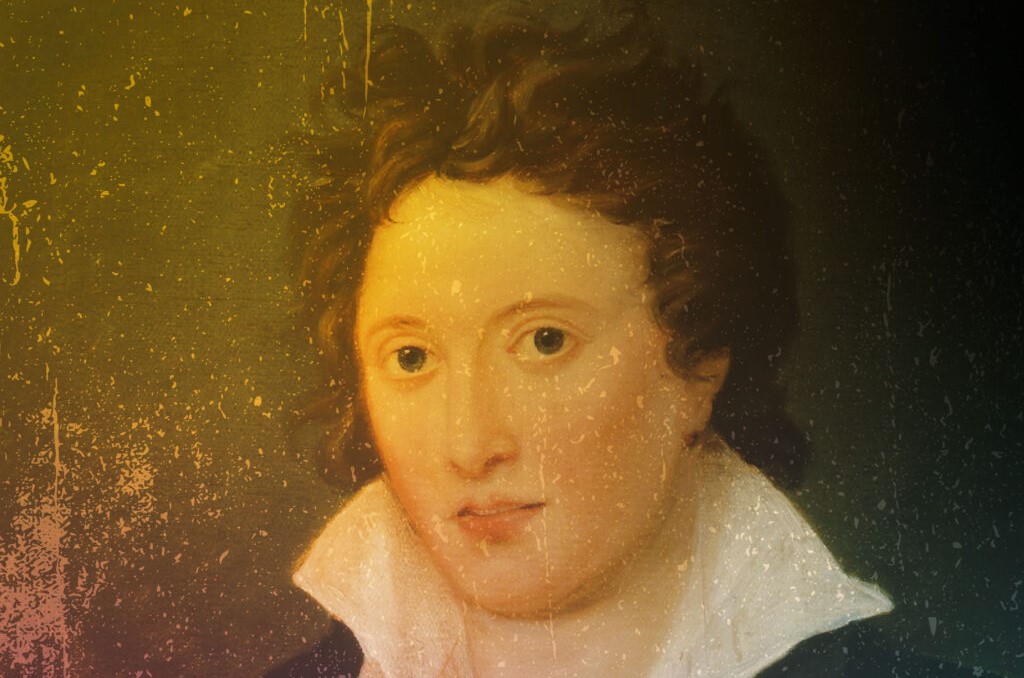He was expelled from Oxford for his article The Necessity of Atheism: Who is Percy Bysshe Shelley?
The literary works he produced by examining and blending different writing styles and various ideas throughout his life, which lasted only thirty years, deeply influenced the thinkers and artists who came after his death.

One of his most famous philosophical essays, The Necessity of Atheism, led to his expulsion from Oxford.
A key figure among the English Romantic poets, Shelley led an unconventional life and died tragically young.
Percy Bysshe Shelley was born on 4 August 1792 near Horsham in Sussex. His father was a member of parliament. Shelley was educated at Eton and Oxford University. There he began reading radical writers such as Tom Paine and William Godwin. In 1811 he was fired for his contribution to a pamphlet promoting atheism.
Percy Bysshe Shelley (4 August 1792 – 8 July 1822) was an English writer who is considered as one of the major English Romantic poets. A radical in his poetry as well as in his political and social views, Shelley did not achieve fame during his lifetime, but recognition of his achievements in poetry grew steadily following his death, and he became an important influence on subsequent generations of poets, including Robert Browning, Algernon Charles Swinburne, Thomas Hardy, and W. B. Yeats. American literary critic Harold Bloom describes him as "a superb craftsman, a lyric poet without rival, and surely one of the most advanced sceptical intellects ever to write a poem."
Shelley later went to Scotland with Harriet Westbrook. The resulting scandal created a serious rift between him and his family. Harriet and Shelley had two children; Despite this, they broke up. In 1813 Shelley published his first serious work, 'Queen Mab'.
In 1814, Shelley fell in love with 16-year-old Mary, daughter of William Godwin (Shelley's friend) and Mary Wollstonecraft. The couple traveled through Europe together and spent the summer of 1816 with Lord Byron at Lake Geneva. Shelley wrote poetry and Mary wrote the novel 'Frankenstein'.
In December 1816, Shelley and Mary married, just weeks after Harriet was drowned. In 1818, Shelley took his family to Italy, where they moved from city to city. Two of Shelley's children died, and Mary herself suffered a nervous breakdown. However, this was the most productive period of Shelley's life. His poems included 'Prometheus Unbound' (1818-19) and 'Adonais' (1821), inspired by the death of his friend and poet John Keats.
In April 1822, the Shelleys settled in the bay of Lerici on the northwestern Italian coast. On July 8, Shelley was returning from visiting friends Lord Byron and James Leigh Hunt when his boat capsized and he drowned. He was cremated and his ashes were placed in the Protestant Cemetery in Rome, where Keats was also buried.
Who is Percy Bysshe Shelley?
He analyzed the world, nature, people, and art from a radical and idealist perspective, and defended ideas such as socialism, vegetarianism, and atheism. At the same time, he criticized the first-generation romantic poets, who inspired him, with various metaphors and formal games in both his essays and poems, in the context of their apolitical and sometimes even pro-establishment attitudes. Positioning himself against the order in which he lived, he continued to fight his intellectual war for a right and good society according to his beliefs until the end of his life.
Shelley's writing is proof of what a passionate person he is. His sensuous eloquence and surprisingly productive imagination multiply in waves, surrounding and capturing the reader from all sides. Oscar Wilde, who loved Shelley, who lost his life in the shipwreck, stated in the poem he wrote in memory of him (see The Grave of Shelley) that the place of the grave that would suit Shelley should be on a rock where the waves crash. Shelley's memory should be in the heart of nature, restless, always in motion.
Contrary to popular belief, the 19th-century Romanticism movement is not a formation centered on a single person, group, or region. It is a movement that includes various expressions of sincere opposition to the effect of Enlightenment thought, which glorifies science, rationality, and system, which diminishes human beings, nature, and art. Romantic Period musicians, poets, writers, and thinkers tended to redefine the concepts of nature and human beings, subjectivity, eternity, imagination, art, and poetry, from time to time drawing on the neoclassical understanding of beauty. The idea of the necessity of subjective sincerity in art and the defense of temporal circularity in the text structure, which we see in the works of modernist writers such as Joyce, Woolf, and Proust, who came to light after the Romantic period, even by almost destroying it, are a continuation of the aesthetic understanding of the romantic period.
